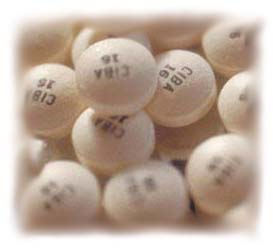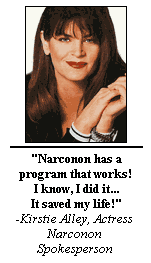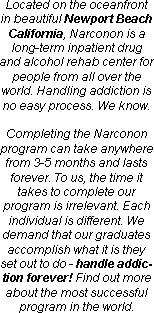|
|


FAQ
About Ritalin
- In
1990, 900,000 American kids were on Ritalin. Today some estimate the total number
of children on Ritalin has increased to 4 - 5 million or more per year
- America
now uses 90% of the world's Ritalin - more than five times the rest of the world
combined.
- Emergency room visits by
children ages 10-14 involving Ritalin intoxication have now reached the same level
as those for cocaine which indicates escalating abuse of this highly addictive
drug.
- 80% of children on Ritalin are
boys.
 Q)
What is Ritalin? Q)
What is Ritalin?
A) Ritalin (methylphenidate)
is a central nervous system stimulant, similar to amphetamines in the nature and
duration of its effects. It is believed that it works by activating the brain
stem arousal system and cortex. Pharmacologically, it works on the neurotransmitter
dopamine, and in that respect resembles the stimulant characteristics of cocaine.
When taken in accordance with usual prescription instructions, it would be classified
as having mild to moderate stimulant properties, but when snorted or injected
it has a strong stimulant effect. Ritalin is manufactured by CIBA-Geigy Corporation,
and is supplied in 5 mg., 10 mg., and 20 mg. tablets, and in a sustained release
form, Ritalin SR as 20 mg. tablets. It is readily water soluble and is intended
for oral use. It is a Schedule II Controlled Substance under both the federal
and Indiana Controlled Substances Acts. Since Ritalin is a Schedule II Controlled
Substance, the federal government strictly regulates the amount that may be manufactured,
through a system of rigid manufacturing quotas.
Q) How is Ritalin used? A)
When abused, Ritalin tablets are taken orally, crushed and then snorted, or dissolved
in water and "cooked" for intravenous injection.
There are numerous
reports in medical journals about permanent and irreversible lung tissue damage
related to injection of crushed Ritalin tablets. In
order to make the 5- to 20 mg. dose tablets large enough to handle easily, at
least 100 mg. of "inert ingredients" are added to the tablets to increase
their size. Depending upon size and formulation, the following inert ingredients
are found in Ritalin tablets, according to the manufacturer: lactose, starch,
polyethelene glycol, magnesium stearate, sucrose, talc, cellulose, mineral oil,
and various dyes and conditioning agents. While these ingredients are "inert"
when taken by mouth, they can cause serious problems when injected or snorted.
- Health Consequences of Intravenous and/or Injection
Drug Use
The hypodermic syringe was designed to deliver a concentrated
dose of a drug quickly and efficiently. In doing so, it bypasses many of the body's
natural defense mechanisms such as the skin, respiratory cilia, digestive acids,
etc. The syringe allows anything in it (drugs, dust, bacteria, pollen, allergens,
yeasts, viruses, fillers, etc.) to pass directly into the blood and body tissues.
The rapid delivery of drugs via injection makes it difficult for the user to control
the intensity of the drug effect, thus making toxic overdoses more likely.
When drugs are prepared for injection by a street user, dust, dirt, and other
contaminants fall into the liquid. Bacteria, talc, lint, and other particles are
injected along with the drug. The "inert ingredients" that manufacturers
include to increase the bulk may be harmless when taken by mouth, but talc, cellulose,
mineral oil, and sugars (among other fillers) can create serious problems when
injected directly into veins or body tissues. Complications from injection drug
use include: - drug overdoses and toxic
overdose reactions
- blood clots from
scar tissue, particles in the liquid, cotton and lint fibers, etc.
- infections
("blood poisoning," abscesses, hepatitis, AIDS, etc.)
- scars
("tracks" and adhesions)
- pulmonary
problems ("addict's lung," embolisms, etc.)
- skin
and circulatory problems
- Health
consequences of Snorting Drugs (Intranasal Insufflation)
The delicate
epithelial tissues that line the nasal cavities and air passages may be damaged
by direct contact with drugs. Ritalin tablets contain the hydrochloride salt of
methylphenidate and yield dilute hydrochloric acid when they come into contact
with moisture. While this is not a problem in the stomach (hydrochloric acid is
one of the digestive acids used in the stomach), in the nasal passages the acid
can "burn" the delicate nasal tissues, resulting in open sores, nose
bleeds, and possibly in deterioration of the nasal cartilage.
Q) What are the side effects of Ritalin? A)
The side effects of Ritalin addiction include but are not limited to:
- drug addiction
- nervousness
and insomnia
- loss of appetite
-
nausea and vomiting
- dizziness
-
headaches
- changes in heart rate and
blood pressure (usually elevation of both, but occasionally depression)
- skin
rashes and itching
- abdominal pain
-
weight loss
- digestive problems
- toxic
psychosis
- psychotic episodes
- severe
depression upon withdrawal
High
doses of stimulants produce a predictable set of symptoms that include:
- loss of appetite (may cause serious malnutrition)
- tremors
and muscle twitching
- fevers, convulsions,
and headaches (may be severe)
- irregular
heartbeat and respiration (may be profound and life threatening)
- anxiety,
restlessness
- paranoia, hallucinations,
and delusions
- excessive repetition
of movements and meaningless tasks
- formicaton
(sensation of bugs or worms crawling under the skin)
While
death due to non-medical use of Ritalin is not common, it has been known to occur.
Q) What are the symptoms of Ritalin overdose? A)
Symptoms of Ritalin overdose may include: Agitation, confusion, convulsions (may
be followed by coma), delirium, dryness of mucous membranes, enlarging of the
pupil of the eye, exaggerated feeling of elation, extremely elevated body temperature,
flushing, hallucinations, headache, high blood pressure, irregular or rapid heartbeat,
muscle twitching, sweating, tremors, vomiting.
A growing number of youngsters
taking the drug Ritalin® (methylphenidate) experience overdose, researchers
report. The study looked at the frequency of Ritalin overdose cases reported to
a regional poison control center in Detroit. Children ages 6 to 9 years were at
the greatest risk of overdose, compared with other age groups. Over a two-year
period, 289 cases were reported. Of these, 31% developed symptoms. Most common
adverse effects included tachycardia, agitation and lethargy. Most cases were
due to parents or caregivers unintentionally giving patients excessive amounts
of the drug.
If
you have a problem with ritalin addiction call Narconon Southern California drug
rehab center, we can help 1800 US NO DRUGS top
of page
|

comment corner| drug rehabilitation saving taxpayers |
California taxpayers are saving more money than expected due to ... |
 | Study: Marijuana Causes Lung Damage | New research finds that smoking three or four marijuana cigarettes ... |
 | Thanks to Online Pharmacies, Addiction Can Be Just a Click Away | WASHINGTON -- Kelly Knable, a 34-year-old mother of three from ... |
 | Balancing pain and drug addiction | Over the past two decades, two conflicting medical ideas have ... |
  | State officials create prescription drug abuse task force | TALLAHASSEE, Fla. --
State officials on Friday announced the creation ... |
 | Florida system often fails to catch Medicaid abuse at source | FORT LAUDERDALE, Fla. - (KRT) - The victim's skin was ... |
 | Marijuana's rising threat: For more kids, use turns into addiction | John Brown experimented with marijuana at age 10, and it ... |
 | Student gets state prison term for selling marijuana | EASTON -- David Messina had his whole life ahead of ... |
 | Man charged in cocaine case forfeits $585,000 | An Iowa truck driver arrested by Kentucky Vehicle Enforcement officers ... |
 | Cocaine Curtails Body's Ability to Cool Off | In addition to triggering life-threatening cardiovascular episodes, cocaine can be ... |
 | Science for Cops | I admit it: I'm a Law & Order fan. ... |
 | New Gene Therapy Could Help Quell Alcoholic Cravings | One prevailing view of addiction holds that alcohol and other ... |
 | One Dose of Cocaine Primes the Brain for Addiction | It isn't a myth: one dose of cocaine is all ... |
 | Marijuana Firmly Linked to Infertility | Scientists from the University of Buffalo have smoked out what ... |
 | Moderate Alcohol Consumption Clouds Brain's Ability to Detect Mistakes | It's common knowledge that a brain on booze doesn't function ... |

|
 |









Q)
What is Ritalin?



















